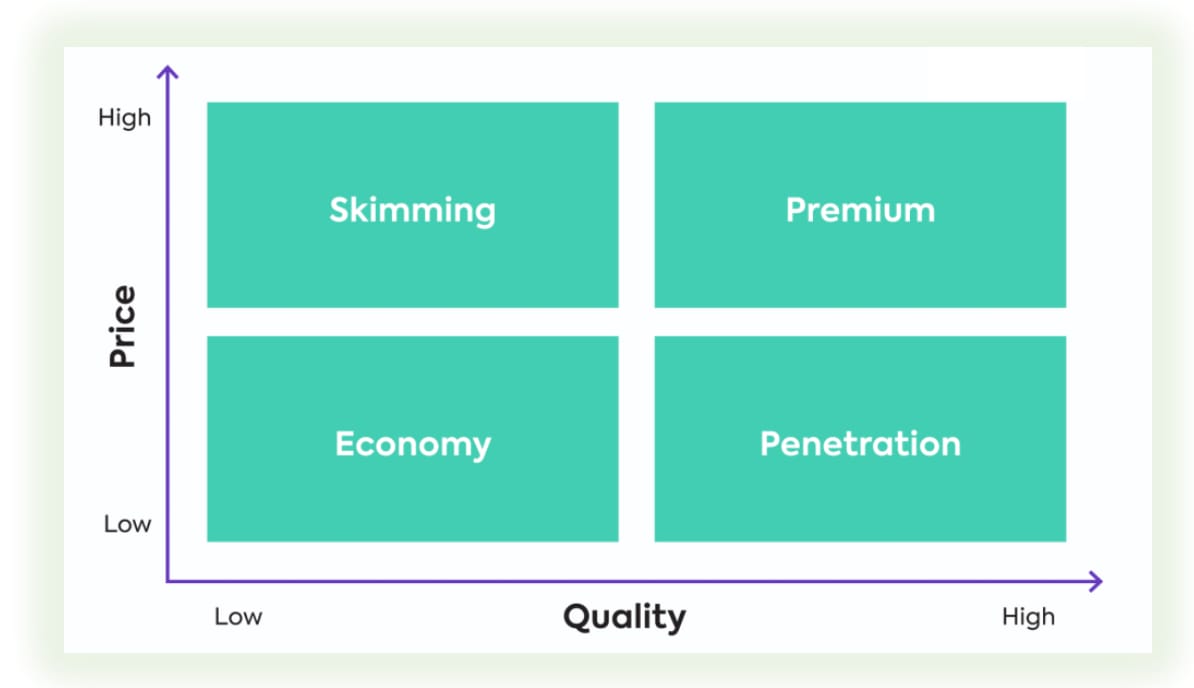- The Growth Equation
- Posts
- The surprising benefits of upselling
The surprising benefits of upselling
How Boosting Your Prices Can Increase Customer Satisfaction and Loyalty
What is the Price Skimming Strategy?
Are you familiar with the price skimming strategy? It's a pricing technique where a company introduces a new product or service at a high price, and then gradually lowers the price over time.
One reason companies might use this strategy is to recoup the costs of developing and launching a new product as quickly as possible. By charging a premium price initially, the company can recoup its investment faster.
Another reason companies might use price skimming is to appeal to early adopters, who are typically willing to pay a higher price for the newest and most innovative products. These early adopters can also serve as ambassadors for the product, spreading the word and helping to drive demand.

How Does the Price Skimming Strategy Work?
Here are a few practical examples of how the price skimming strategy can work in real life:
A technology company releases a new smartphone at a high price. The company expects to sell the phone to early adopters who are willing to pay a premium for the latest and greatest technology. Over time, as the technology becomes more widely available and competition increases, the company lowers the price to appeal to more price-sensitive customers.
A pharmaceutical company develops a new drug and releases it at a high price. The company charges a premium price initially to recoup the costs of developing and bringing the drug to market. As the patent on the drug expires and generic versions become available, the company lowers the price to compete with the cheaper alternatives.
Factors to Consider When Implementing the Price Skimming Strategy
While the price skimming strategy can be effective in some cases, it's important to carefully consider the following factors before implementing it:
Market demand: Is there enough demand for your product or service at the high price you're considering? If not, you might need to lower the price to attract enough customers.
Competition: How does your product or service compare to similar products or services on the market? If there are similar products available at a lower price, it might be difficult to justify a premium price.
Cost of production: How much does it cost to produce your product or service? If your production costs are high, you might need to charge a higher price to make a profit.
Target market: Who is your target market? Are they willing to pay a premium price for your product or service? If not, you might need to consider a different pricing strategy.
Price elasticity: How sensitive are customers to price changes? If customers are highly price-sensitive, they might not be willing to pay a high price for your product or service.
Pros:
Allows a company to quickly recoup the costs of developing and launching a new product or service.
Appeals to early adopters who are willing to pay a premium price for the newest and most innovative products.
Can establish a product or service as a premium offering in the market.
Allows a company to test different price points and gather valuable customer data.
Can increase profitability in the short term.
Cons:
Can lead to decreased demand if the price is too high.
Can lead to increased competition from cheaper alternatives.
Can be difficult to maintain a premium price over the long term.
Price skimming strategy can be a useful tool for companies looking to quickly recoup their investments and appeal to early adopters. Just be sure to carefully consider your pricing strategy and the potential risks and rewards before implementing it.
Reply